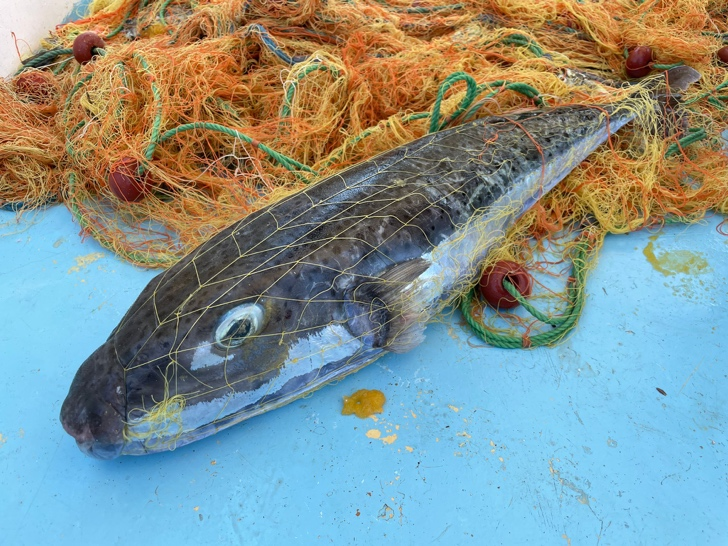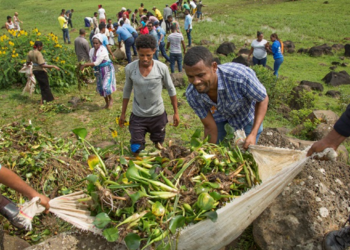Innovative business strategy to face the pufferfish invasion: Turkish production from pufferfish leather benefitting the sea, the fishers, marginalized women and the fashion industry
Innovative business strategy implemented by Turkish marine scientist ensures management of pufferfish invasion, by turning it into eco-friendly fish leather crafts.
Aylin Ulman is starting a new bio-economy business in Türkiye collecting invasive pufferfish and commercializing them into luxury leather for the fashion industry. Accordingly, she declared:
“For the past five years, I have been studying pufferfish in southern Turkey for the pharmaceutical industry, which is experimenting with the use of its poison as a painkiller. Since I was organizing the pufferfish collection anyway, I thought about trying to transform its gorgeous skin into fish leather. Indeed, a previous Turkish experiment with the silver-cheeked toadfish leather – with a beautiful natural leopard print on its back and growing quite large in size and abundances– inspired me.
I collect the pufferfish skins around the coast, then send them for salting. After some trials with different tanneries, I was introduced to a very experienced tanner who continually improves his fish leather tanning methodology for me. With his expertise, we are starting from scratch since there was no recorded method for tanning fish in Türkiye. With just one year of trials, we have achieved a luxury leather-type product.”
In early 2023, Aylin’s company Mersea Marine Consulting gained support from the UNDP’s Ocean Innovation Challenge. UNDP selected Mersea for its Third Ocean Innovation Challenge, which focuses on protecting coastal and marine areas and promoting the Blue Economy. She and her team are currently receiving mentorship for 18 months to successfully enter the market and become self-sufficient with the plan of upscaling the project’s output over a short time.
The pufferfish is likely the worst marine invasive species ever encountered in the Eastern Mediterranean. High levels of TTX poison have been discovered in all their tissues, and they have created numerous problems since their invasion: being terrible predators, they reduce local cephalopod stocks (their favorite prey), and by eating through fishing nets, they damage both fishing gear and catches. Moreover, they have recently started to attack innocent swimmers. Since complete eradication of the invasive species is impossible, the only solution is to attempt to manage their impact by controlling them through constant removals. Innovative business models based on this fish exploitation can be considered highly effective strategies to face this problem in the long-run.
The Project design provides numerous benefits. Firstly, the state of the seas will be improved by reducing the presence of this toxic fish and consequently its predation activity, which should help fisheries and native biodiversity restoration. Secondly, the possibility to catch this fish has been granted only to small-scale fishers, providing them with a diversified source of income. Additionally, deep freezers have been provided to fish managers with the aim of improving their marketing opportunities. Moreover, marginalized women are the only category hired and trained for pufferfish leather (PFL) product production, aiming to economically sustain them and improve their skills and well-being. The PFL is a true example of an eco-positive business due to different aspects: it has a positive influence on the marine ecosystem, it provides economic diversification opportunities for the fishers, and it provides employment to marginalized women. Last but not least, the brand creted a real and sustainable innovative type of bio-material for the leather industry.

The brand’s name is Olta Azul, and Olta means “fishing hook” in Turkish. It endorses new blue bio-economy standards, since it will both provide tanned leathers to existing brands, and will also fashion its own line of minimalistic leather products. It will create luxury leather accessory items to protect people’s essentials, such as cardholders, clutches, laptop cases, phones and airpods. Indeed, the market analysis seems to show that these articles interest more the millennials, and there could be growing market demand for transformative and sustainable eco-positive materials, especially from this group.
Aylin’s innovative mind does not stop to pufferfish leather production: she is closely working with her tannery expert to develop a fully organic tanning method as an alternative to the traditional chrome-tanned leather, aiming to provide diversified options to meet consumer’s demands. However, the technique has limits since chrome tanning is still the industry standard for waterproof, long-lasting treatments.
Aylin’s interest in the sea and the threats it faces date back to her experience as PADI dive instructor. Later, she graduated from her MSc is fisheries science at the University of British Columbia (Canada), and then she gained her PhD at the University of Pavia (Italy) with a thesis on the role of boating in the spread of invasive species in the Mediterranean. For her business idea, she was lucky to have the support from a heterogenous group of entreprenuer-minded friends, that helped her out: notably, Allie El Hage from the USA who is an architect and inventor of the Zookeper Lionfish Containment System; Scott Gonnello of Lionfish Central, who is now the SEO expert and website designer of Aylin’s brand, www.pufferfishleather.com. Thanks to regular advice and training from the right people, pufferfish leather is now ready to enter the market for international commercial sales. She recently gained some great insider knowledge on the business from the Lineapelle leather tradeshow in Milan and will continue to increase her network of leather-making and manufacturing experts. Aylin’s business seems to be growing incredibly, ensuring her success in her primary goal of helping the environment.
Innovative business strategy to face the pufferfish invasion: Turkish production from pufferfish leather benefitting the sea, the fishers, marginalized women and the fashion industry









